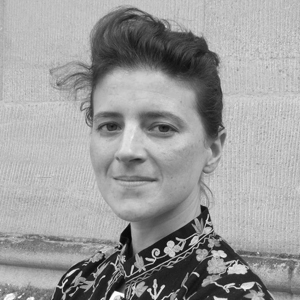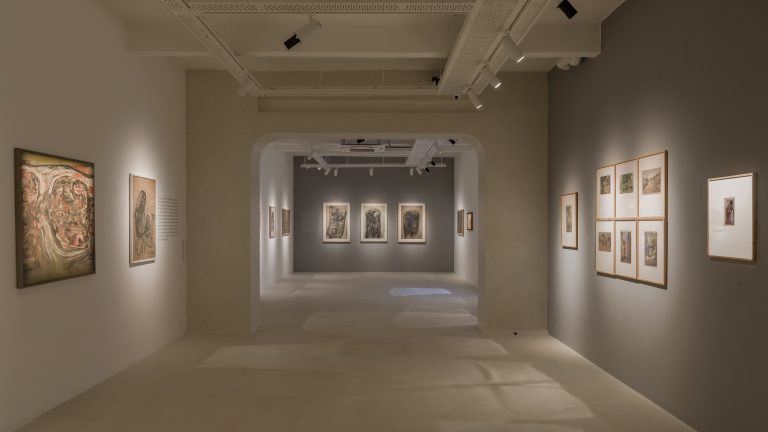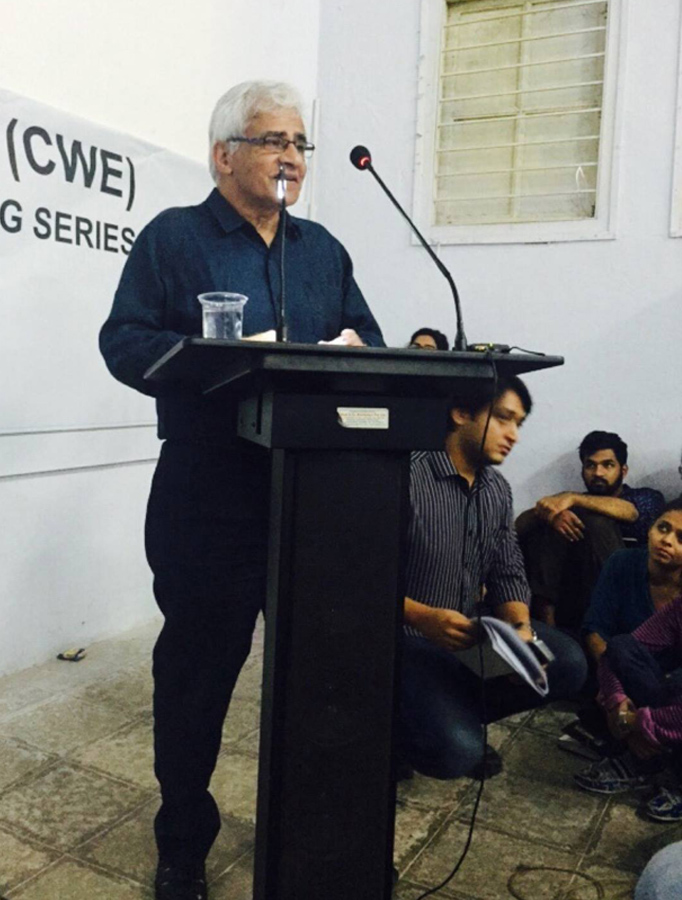
I met Vivan and Geeta in December 2008 in Delhi. I was then a PhD student at the Courtauld Institute of Art in London, researching and writing about Nasreen Mohamedi. I had heard a lot about the wondrous duo and felt a little anxious about meeting them. In any case, I remember finally setting up the meeting. It was Vivan who opened the door and greeted me into their home on a cold and sunny day. He smiled, a little spark catching fire in his eyes. I spent the entire day with Vivan and Geeta, talking, asking questions, eating food, and gathering vital information about Mohamedi. I also remember Vivan sharing with me his own work, specifically a series of black-and-white political cartoons, including his Smash Dynastic Ambitions, published during the 1975 Emergency in India. I had not encountered these images before: a tank-cum-bulldozer operated by Sanjay Gandhi, crushing a defenceless mother and her makeshift shelter, and Indira Gandhi, intent on avoiding a Damoclean hammer and suspended sickle –engulfed by the jaws of a vicious Maruti. That day I left Geeta and Vivan’s home elated, my belly full, and my bag overflowing with photocopies, books, and catalogues.
Over the years we kept in touch and I would visit both whenever in Delhi. In 2015 for the Baroda Chapter of the Critical Writing Ensemble, hosted by Take on Art and organised by Bhavna Kakar, Vivan, Geeta and I contributed to the memorable panel ‘The Political Unconscious of Art Writing’ in a hot auditorium packed with students and staff members.
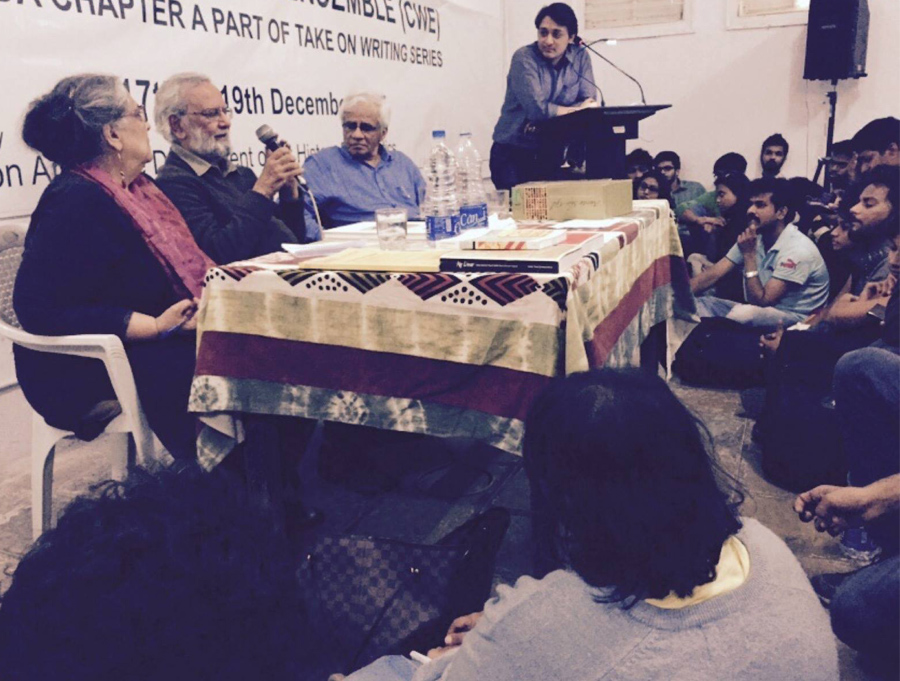
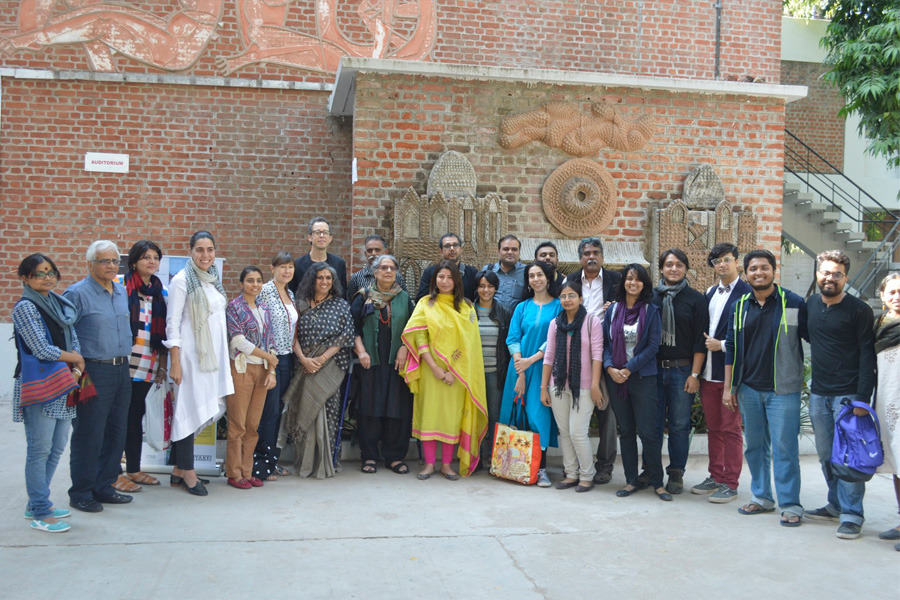
We later met in London, for the symposium Showing, Telling, Seeing: Exhibiting South Asia in Britain 1900 to Now, hosted by Paul Mellon Centre in July 2016, and in 2018 in Munich on the occasion of Vivan’s epic exhibition Disjunctures at Haus Der Kunst. Disjunctures offered a landmark retrospective that celebrated Vivan’s lifelong investment in the categories of the political and the aesthetic across multiple media. The last time we met, Vivan gave a fascinating talk at Tate Britain about his student days in London at the Slade School of Fine Art. He recounted his experiences with verve and joie de vivre – his engagement with various student protests that swept Europe in the late sixties. He also shared how he had lived in a commune in London, and travelled back to India from Europe by bus, passing through the Middle East and later Afghanistan. The audience, myself included, was mesmerised by his stories.
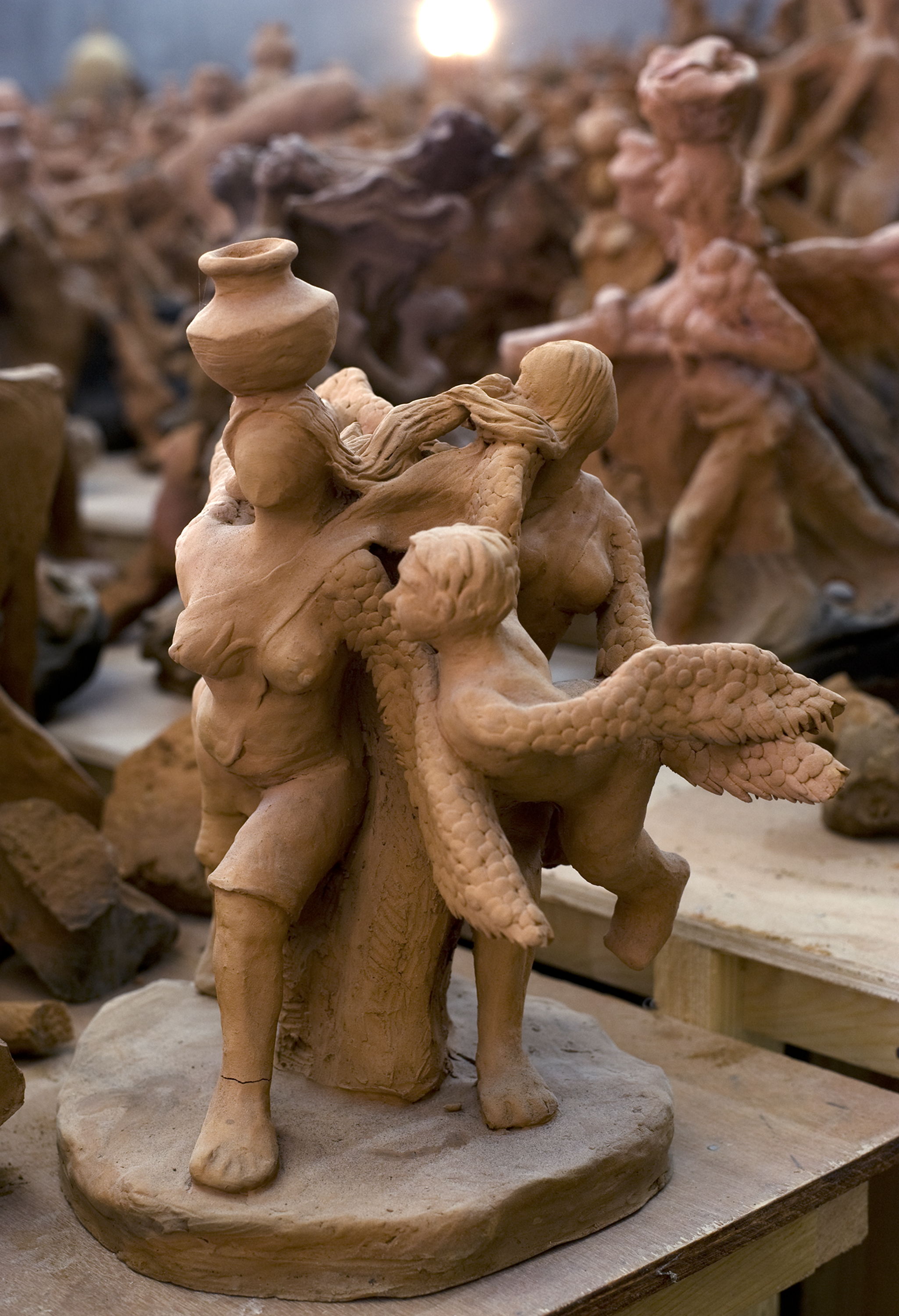
Vivan Sundaram, One and the Many, 2015 (from 409 Ramkinkars), displayed at Disjuncture, Terracotta figurines, Photograph by Gireesh G.V. Courtesy The Estate of Vivan Sundaram
More recently, upon hearing of my mother’s untimely passing, Vivan wrote to me repeatedly offering words of comfort. His health was deteriorating but still, he prodded me on with more words of encouragement: she was ‘an exceptional woman, her activism is one aspect that I connect to. Hopefully one day you will talk or even write about her’. It was our last email exchange. Vivan was hospitalised shortly after.
I have reviewed and written essay responses engaging with a number of Vivan’s works and exhibitions, beginning with his installation Memorial (1993-2014) in the opening pages of my book Art and Emergency: Modernism in twentieth-century India (2018). This sprawling installation offered a grim allegory of remembrance in the wake of the communal carnage that erupted in Mumbai between December 1992 and January 1993. Memorial involved a series of discrete units, including Mausoleum, in which Vivan transformed a newspaper photograph of a communal riot victim into a plaster cast figure and placed the body inside a triangular structure. The mausoleum inlay with its Suprematist structure alluded to a work by Nasreen Mohamedi, Vivan’s friend. Memorial is a one-way street, a bleak gateway with no exit in sight. It is a work that continues to haunt me. As I revisit this work today at London’s Tate Modern, a sense of crippling nostalgia hangs over me, now that Vivan is no more.
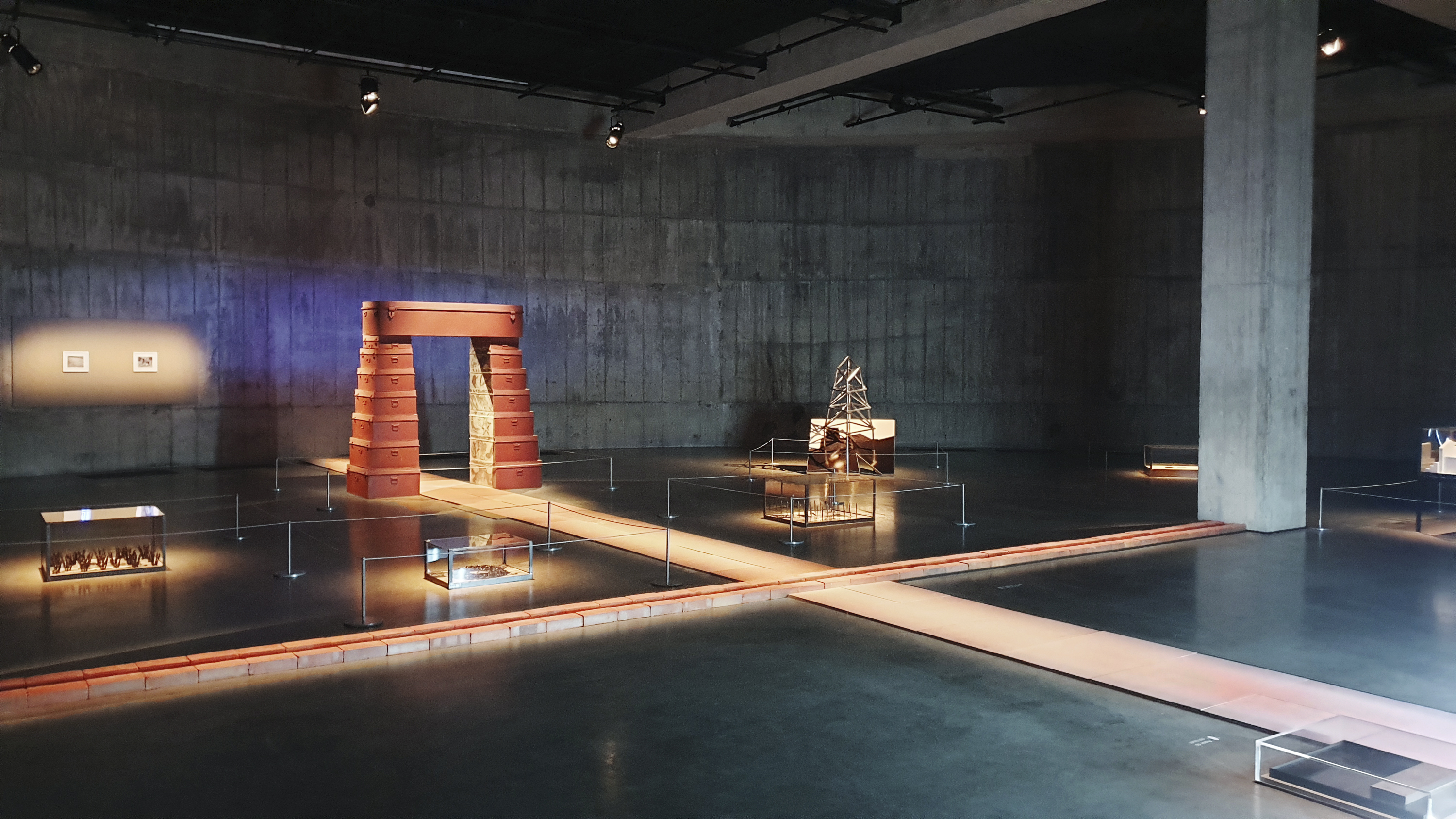

Vivan Sundaram, Memorial, 2023, Installation view, Tate Modern, London, Collection: Tate Modern, London, Photograph by Michael Raymond, Courtesy The Estate of Vivan Sundaram
In A Fragile Inheritance: Radical Stakes in Contemporary Indian Art (2021), scholar Saloni Mathur critically engages with and celebrates both Vivan and Geeta’s legacy. In my review of this book for Third Text, I write about how Mathur foregrounds the fragility that attends to acts of bequest. I asked: what kind of critical writing and making can today honour the couple’s lived commitment, continue to nurture the body of art, sustain its vitality, and as Kapur once wrote ‘allow it mortality’ whilst rescuing it from ‘a premature condition of hypostasis’? To articulate a vanguard for the future from a place that continues to mutilate the present, putting the idea of political hope on hold and under prolonged duress is the challenge Vivan continued to step up to. Vivan created, nurtured, and encouraged those around him. I know that many younger artists have felt supported and much loved by him. Ever-hopeful Vivan reminded me of a quote by Italian political theorist and prisoner Antonio Gramsci penned in 1924: ‘My mind is pessimistic, but my will is optimistic. Whatever the situation, I imagine the worst that could happen in order to summon up all my reserves and willpower to overcome every obstacle. Take the next step. It may be a mile, it may be six inches. Take it and you will have begun to act’.
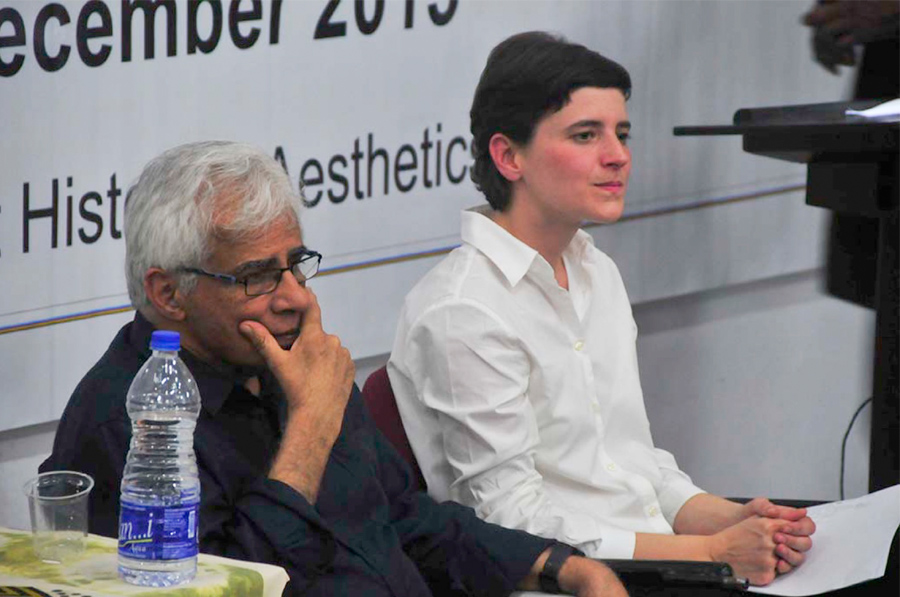
Vivan summoned up all his energies from his great reservoir of wisdom and experience. He was an unstoppable creator, who never gave up, no matter how dark the situation. He reminded me that optimism is something one must purposefully marshal, a form of discipline one ought to cultivate, against all internal and external threats of dejection and hopelessness. That optimism is another word for political action. I am grateful that Vivan read my writing, engaged with my thinking, and offered critical feedback. I am saddened by his passing, and I miss him very much. I am also honoured to have had the good fortune of meeting him and to learn from his remarkable example. He was a fun-loving friend and he made me laugh. As I return to his installation Memorial, I might then want to think of this structure not as sealing off the past but as opening a passage or loophole into the future. Thank you Vivan.
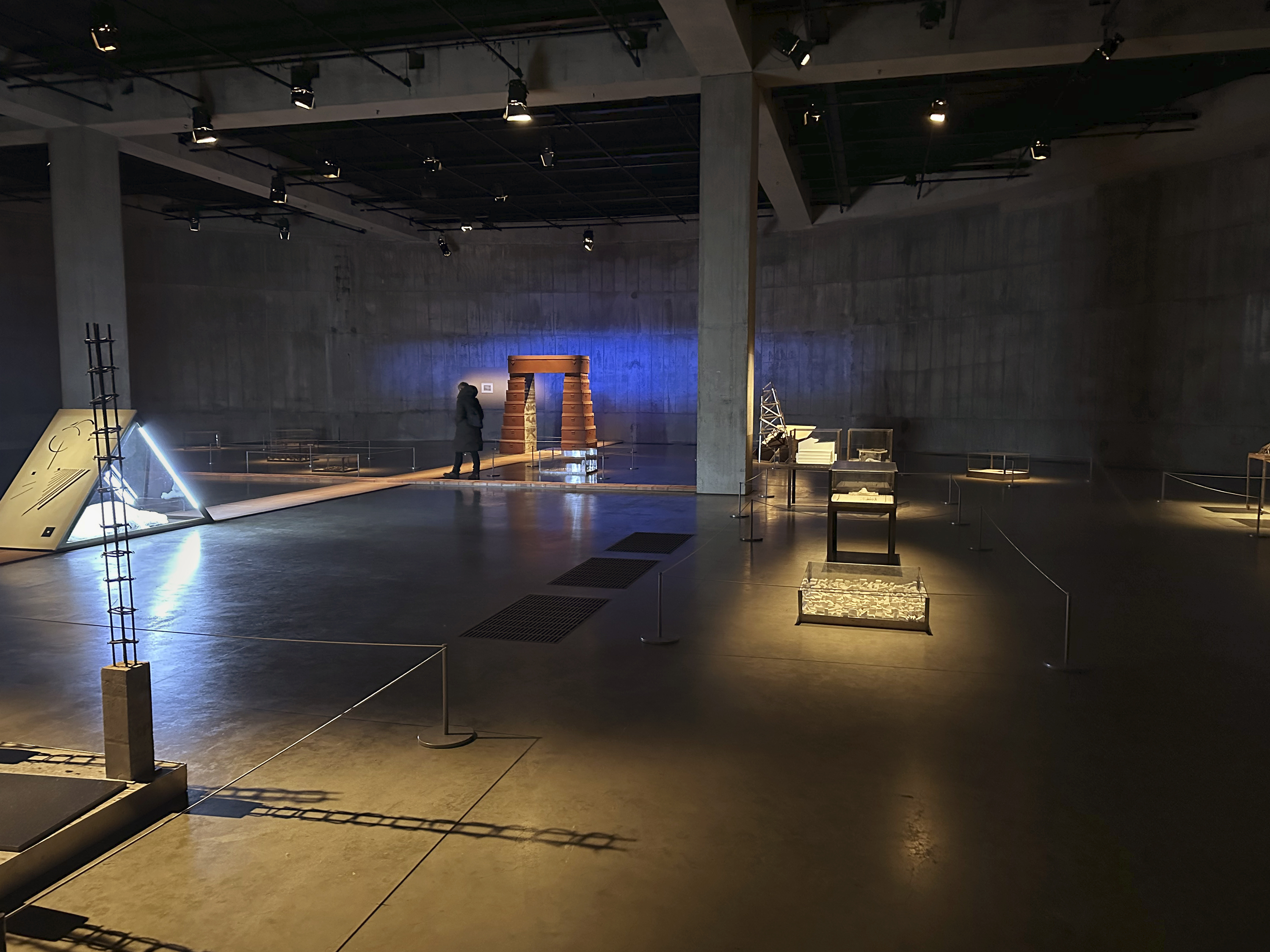
Memorial, 2023, Installation view, Tate Modern, London, Collection: Tate Modern, London, Photograph by Michael Raymond, Courtesy The Estate of Vivan Sundaram









